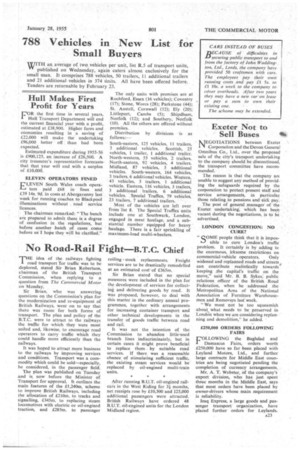No Road-Rail Fight—B.T.c. Chief T HE idea of the railways fighting
Page 25

If you've noticed an error in this article please click here to report it so we can fix it.
road transport Tor traffic was to be deplored, stated Sir Brian Robertson, chairman of the British Transport Commission, when replying to a question from The Commercial Motor on Monday.
Sir Brian, who was answering questions on the Commission's plan for the modernization and re-equipment of British Railways, went on to say that there was room for both forms of transport. The plan and policy of the B.T.C. were to attract to the railways the traffic for which they were most suited and, likewise, to encourage road operators to carry traffic which they could handle more efficiently than the railways.
It was hoped to attract more business to the railways by improving services and conditions. Transport was a commodity which could be sold—especially, he considered, in the passenger field.
The plan was published on Tuesday and is now before the Minister of Transport for approval. It outlines the main features of the £1,240m. scheme to improve British Railways, including the allocation of £210m. to tracks and signalling, £345.m. to replacing steam locomotives with electric or oil-engined traction, and £285m. to passenger rolling stock replacements. Freight services are to be drastically remodelled at an estimated cost of £365m.
Sir Brian stated that no special measures were included in the plan for the development of services for collecting and delivering goods by road. It was proposed, however, to deal with this matter in the ordinary annual programmes, together with arrangements for increasing container transport and other technical developments in the transfer of goods traffic between road and rail.
It was not the intention of the Commission to abandon little-used branch lines indiscriminately, but in certain cases it might prove beneficial to replace them by suitable road services. If there was a reasonable chance of stimulating sufficient traffic, the existing steam services would be replaced by oil-engined multi-train units.
After running B.U.T. oil-engined railcars in the West Riding for 3i months, net receipts rose by £10,500 and 125,000 additional passengers were attracted. British Railways have ordered 48 B.U.T. oil-engined units for the London Midland region.




















































































